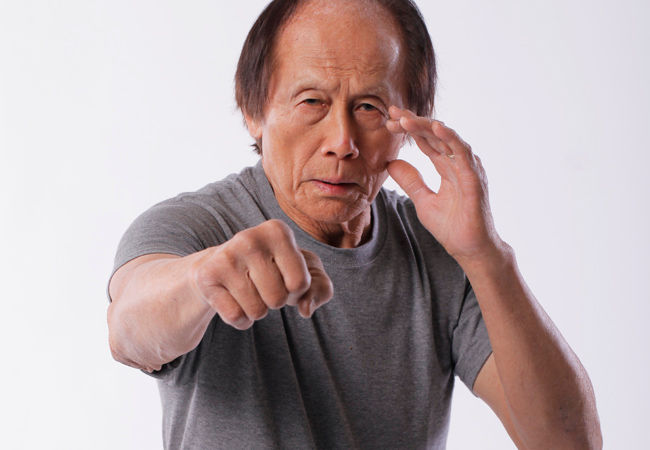Leo Fong: Kung Fu Artist of the Year (2006)
- Black Belt Magazine
- Mar 20, 2011
- 3 min read
Updated: Oct 28, 2023

Throughout the decades, Leo Fong has worn many hats—actor, writer, director, producer, minister, social worker and fitness coach—but his most important role has been that of kung fu master. Born in Guangzhou (formerly Canton), China, Leo Fong moved to Arkansas at age 4.
In his youth, he used his pugilistic skills to become an Amateur Athletic Union and Golden Gloves champion in Arkansas and Texas. He then enrolled at Hendrix College in Arkansas and later received a master’s degree in theology from Southern Methodist University.
After beginning his career as a Methodist minister, he earned a master’s degree in social work from Sacramento State University. Leo Fong moved to Northern California, where he began training in a variety of martial arts. He attained master-level rank in taekwondo, jujutsu, si lum kung fu, choy lay fut and wing chun kung fu.
He had the good fortune to train with three legends: choy lay fut’s Lau Bun, sil lum’s T.Y. Wong and then-wing chun practitioner Bruce Lee. Leo Fong often receives credit for inspiring Bruce Lee to develop his boxing skills and for helping him formulate jeet kune do.
But Leo Fong opted not to spend his days promoting Bruce Lee’s art. Instead, he founded his own style, called wei kuen do, the “way of the integrated fist.” It’s a complete system based on boxing, kung fu and street self-defense, Leo Fong says.
Leo Fong’s impact on the American martial arts community dates back to the 1970s. First, he penned Sil Lum Kung-Fu and Choy Lay Fut Kung-Fu for Ohara Publications (now Black Belt Books). They were the first books about those arts written in English and aimed at the general public.
Leo Fong was recommended to draft the text by his friend and training partner, Bruce Lee. During the 1970s and ’80s, Leo Fong became one of the first people to produce and star in martial arts instructional films. He continued to inspire and educate through his books, which included Wei Kuen Do, Winning Strategies for Karate and Kung Fu, and Power Training in Kung-Fu and Karate (co-authored with Ron Marchini). In the mid-1970s, Leo Fong started working in the film industry. He starred in Kill Point with Cameron Mitchell and Richard Roundtree, as well as more than 20 action and adventure movies. While living in the Philippines making motion pictures, Leo Fong began learning the stick arts. He studied under Remy Presas, founder of modern arnis.
When Leo Fong returned to California, he trained with Angel Cabales, founder of serrada escrima. Leo Fong later assembled all that he’d learned into a new system called modern escrima.
In 1984 while visiting George Dillman, Leo Fong was introduced to pressure-point fighting. Although the art was still in the developmental stage, Leo Fong realized the self-defense value of being able to effortlessly strike vulnerable points. Over the next two decades, he watched George Dillman refine his martial art, then incorporated parts of it into wei kuen do.
As a martial arts teacher, Leo Fong integrated self-defense techniques and principles with spiritual lessons, and the result inspired and educated thousands. He was one of the first people to create a martial arts program at a church and to develop a youth program based on the arts.
With help from Ron Marchini, he ran a successful chain of schools in Stockton, California, and together they promoted hundreds of tournaments, attracting the likes of Chuck Norris, Mike Stone, Howard Jackson, Joe Lewis, Bob Wall, Steve “Nasty” Anderson, Billy Banks, Steve Sanders, Cynthia Rothrock and John Chung.
After retiring from the church, Leo Fong dedicated himself to mastering the arts of healing and energy. By combining fitness training, psychology, spirituality and the martial arts, he created chi fung, a complete mind-body-spirit workout. He teaches it 10 times a week to hundreds of followers.
For his efforts to spread the Chinese martial arts and boost the fitness level of all students, Black Belt is pleased to name Leo Fong its 2006 Kung Fu Artist of the Year. (This profile originally appeared in the December 2006 issue of Black Belt.)


